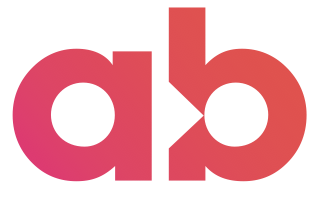Making transformation happen comes down to enrolment
Leadership Blog

Written by Achieve Breakthrough

In a recent blog, we explored how creating lasting sustainability commitments can’t happen without successfully enrolling our teams. This got us thinking about other kinds of major transformation projects, and how fostering resolve and commitment to a vision triumphs or fails with enrolment.
If you’ve spent any time in leadership circles, you’ll realise that everyone, more or less, knows they need to sell that vision to their people. But this is also where many turn down the wrong track.
Many try to sell their vision by treating their employees like potential customers. They rely on all the old marketing tricks, whether it’s storytelling or the strategic use of comms teams. But this isn’t how you win over hearts and minds. It’s not about making the idea irresistible to your people, it’s about making your people a part of the idea.
Persuasion isn’t enough – enrol people early
When was the last time you were persuaded to do something? What was your commitment level like? Did you really want to do what you ended up doing? And if anything went wrong, where would you lay the blame?
Leaders can’t manipulate people. Not if you want to see transformation. All the tools of persuasion and inspiration you hear about are important to the journey, but they can’t make people take the journey in the first place.
It doesn’t matter how much budget you throw at it either. You can host the biggest launch event in history for the unveiling of your organisation’s new plans, but all the glamour won’t disguise the fact that some of your people don’t feel like celebrating yet.
There is an alternative. Instead of keeping our plans hidden from view, we can enrol people early.
Unlike persuasion, which requires you to get others on board with your fully formed plan, enrolment asks others to add their own thoughts to the mix so that their perspective informs the solution.
This goes beyond a focus group. It’s not about testing your theories on a selection of employees. Enrolment puts the idea outside the echo chamber of your board and welcomes input from all directions. You give the vision life quickly and your people reveal the pain points quickly too.
Turning complaint around
Unless you have the perfect idea – and in many cases, even if you have – people will come to you with concerns and complaints about your new vision.
Here you need to be committed to understanding their perspective. And you can only do this if you’ve learnt the art of generous listening. Sometimes their complaint will be based upon a false interpretation or assumption. In this case, listening without judgement will make them feel heard, but will also offer an opportunity to challenge them to see things from a different perspective.
At other times, someone will touch upon a real problem. But they aren’t always good at articulating exactly what the problem is. People usually speak quite generally when they’re voicing concerns, and the challenge for leaders is to coach them to be more specific.
The co-creation of enrolment
Enrolment works by creating a need in the mind of people. As Dwight Eisenhower famously said, “Leadership is the art of getting someone else to do something you want done because they want to do it.”
Once this has taken place, we can ask whether everyone is aligned to the need, and we can figure out what is missing and essential to move forward. It’s only then that everyone will be invested in ensuring that we succeed.
We saw this play out in a law firm who were looking to change the way they did performance reviews. In their industry, such conversations were usually annual and directly tied to pay rises. But they wanted to break this connection so that their people would be more honest in their reviews - and the focus could be on upskilling instead of meeting a bar.
It wasn’t long before they heard the outcry. Although the intentions of the leadership were good, their people saw the move as a way to pay them less over time. To them, the financial gain was an essential part of the annual review ritual.
Because the firm had enrolled people right from the beginning, they could listen and adapt the plans. So instead of borrowing the performance review model of another industry, the law firm made their own way, allowing the insights of their own people to inspire the solution. They ended up creating a radical model that compromised neither performance nor pay, a model that could inspire other law firms to do the same.
Looking to enrol your people and inspire transformation? Get in touch to explore how we can help you ignite your ambitions.
Published 11/12/2024
Subscribe by Email
Achieve more breakthroughs. Get expert leadership ideas, insights and advice straight to your inbox every Saturday, as well as the occasional bit of news on us, such as offers and invitations to participate in things like events, webinars and surveys. Read. Lead. Breakthrough.
Related posts
Leadership Blog
Leadership burnout: Expanding bandwidth to thrive through complexity
Achieve Breakthrough | 16/12/2025
Leadership Blog
What triggers you as a leader, and how to work with it?
Achieve Breakthrough | 09/12/2025
Leadership Blog
Why it’s impossible to lead with one foot still in your old role
Achieve Breakthrough | 03/12/2025
Leadership Blog
Why a leader’s true value lies in what they enable, not just what they know
Achieve Breakthrough | 25/11/2025
